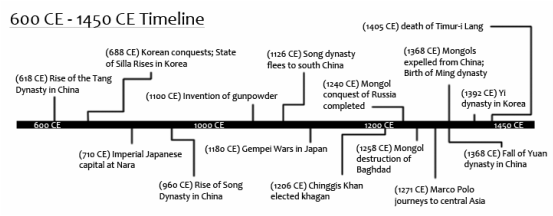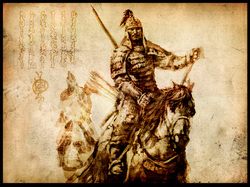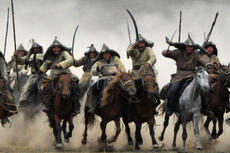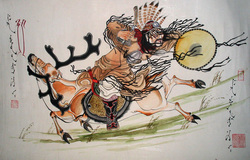Mongols by Shanice C. & Zaric V.
The Mongols were a pastoral nomadic group originating from the central Asian Steppes. These nomadic herders revolved around sheep, goats, and yaks for food, used for milk and meat. They also traded hides for grains and vegetables. The animals were used as clothing and shelter as well. There camels were used as transportation and horses were used for mobility. They sometimes would also sleep and eat on horses. They had seasonal migrations, as well as movable shelters, and were organized into tribes. Their movement began when they sought new pastures for their herds due to the severe droughts.
Technology
Major technological developments were made throughout the military fields. The Mongol War Machine consisted of natural warriors who were trained at a young age how to ride and hunt. They used lances, hatchets, maces, and best of all, short bows as weapons. Most weapon technology was adapted from the Chinese, but new weapons were also created, such as flaming arrows, gunpowder, siege weapons such as rams, catapults, exploding balls, and bamboo rockets. The Mongols also utilized wonderful maps. Mostly technological developments were adapted from the civilizations that they conquered.
Disease
The Mongols suffered from the Black Plague (the Bubonic Plague), beginning in China and spreading through trade routes. The Mongol Empire was deeply affected especially the regions under the control of the Golden Horde. The Mongol income came from the revenues earned from trade, supporting cites and large military forces. Due to the plague, trade began to decline, causing a decline in revenue, which soon leads to the decline of the Mongols. The plague also caused a decrease in population, thus losing citizens and military leaders. The Black Death, combined with attacks, weakened the Mongol Empire and eventually they collapsed.
The Mongols were responsible for the Black Death and were also affected by it, along with other events. This disease lead to the decline of the Mongols, but caused the rise of Western Europe. This rise couldn’t have occurring if the Mongols hadn’t spread through Eurasia. The Mongols combined with the events of the West was the beginning of the world as we know it, thus having major effects.
Disease
The Mongols suffered from the Black Plague (the Bubonic Plague), beginning in China and spreading through trade routes. The Mongol Empire was deeply affected especially the regions under the control of the Golden Horde. The Mongol income came from the revenues earned from trade, supporting cites and large military forces. Due to the plague, trade began to decline, causing a decline in revenue, which soon leads to the decline of the Mongols. The plague also caused a decrease in population, thus losing citizens and military leaders. The Black Death, combined with attacks, weakened the Mongol Empire and eventually they collapsed.
The Mongols were responsible for the Black Death and were also affected by it, along with other events. This disease lead to the decline of the Mongols, but caused the rise of Western Europe. This rise couldn’t have occurring if the Mongols hadn’t spread through Eurasia. The Mongols combined with the events of the West was the beginning of the world as we know it, thus having major effects.
Political Structures and Forms of Government
Before Chinggis Khan took power, the Mongols were difficult to organize, but when with Khan, they became well organized, disciplined, and one unity. The Mongol political organization was like the Bedouins. They were separated into kinship groups or clans, but were sometimes combined into confederations. There clan-based society was organized around bloodlines. Temujin became the leader of the Mongols and was accepted by the title Chinggis Khan, meaning “universal leader.” Later, Chinggis Khan’s sons and grandsons organized the empire in a unique way which led the disrupted trade routes to recover. They formed four khanates, which were each ruled by different relatives, along with the ruler of the empire, located in Central Asia. Once the Mongols defeated an area, they expected tributes (payments), but they allowed the conquered to keep their customs.
Military
The Mongol’s greatest strength was their mobility. Chinggis Khan is one of the most talented military leaders in world history. They had an all male mobilization where every male from ages fifteen to seventy had to serve, but they were each awarded with captured goods. Khan organized his warriors by the Chinese model, armies of 10,000, grouped into 100 men brigades, 100 men companies, and 10 men platoons. All the generals were kinsmen or trusted friends who remained loyal to him at all times. The military strategies that were used were extremely effective. They used surprise tactics, fake retreats, false leads, and were masters at psychological warfare. They learned to be tough, mobile, and were accustomed to death. The military was well disciplined and if they fled, they were killed. Chinggis Khan goes by the saying, “Submit and live. Resist and die.”
Before Chinggis Khan took power, the Mongols were difficult to organize, but when with Khan, they became well organized, disciplined, and one unity. The Mongol political organization was like the Bedouins. They were separated into kinship groups or clans, but were sometimes combined into confederations. There clan-based society was organized around bloodlines. Temujin became the leader of the Mongols and was accepted by the title Chinggis Khan, meaning “universal leader.” Later, Chinggis Khan’s sons and grandsons organized the empire in a unique way which led the disrupted trade routes to recover. They formed four khanates, which were each ruled by different relatives, along with the ruler of the empire, located in Central Asia. Once the Mongols defeated an area, they expected tributes (payments), but they allowed the conquered to keep their customs.
Military
The Mongol’s greatest strength was their mobility. Chinggis Khan is one of the most talented military leaders in world history. They had an all male mobilization where every male from ages fifteen to seventy had to serve, but they were each awarded with captured goods. Khan organized his warriors by the Chinese model, armies of 10,000, grouped into 100 men brigades, 100 men companies, and 10 men platoons. All the generals were kinsmen or trusted friends who remained loyal to him at all times. The military strategies that were used were extremely effective. They used surprise tactics, fake retreats, false leads, and were masters at psychological warfare. They learned to be tough, mobile, and were accustomed to death. The military was well disciplined and if they fled, they were killed. Chinggis Khan goes by the saying, “Submit and live. Resist and die.”
Economical Structures
A major economic machine in the Mongol Empire was their commercial and trade relationships with other neighboring economies, which continued the process of conquests. All the merchants and ambassadors travelled through their realms were protected if they had proper documentation and authorizations, which lead to great surges to overland trading. The Mongol Empire had minor influences on seaborne trade, which was lot larger than overland trade, value and volume wise. Chinggis Khan’s conquests extended the area for production and tax revenues. He also increased the population of the empire, which increased the army, making it more effective and it could still be maintained.
Traditional power structures were broken and soon productivity and revenue began to decrease, but he unified the tribal chiefs through his military. Revenues were received through tributes from conquering territories.
During the Yuan Dynasty, paper money has been temporarily stopped by instead issuing silver and banknotes. The standardization of the currency allowed monetized taxes and minimized the cost of taxes, but in Siberia and Manchuria, taxes were still paid and given to the Mongol Empire.
A major economic machine in the Mongol Empire was their commercial and trade relationships with other neighboring economies, which continued the process of conquests. All the merchants and ambassadors travelled through their realms were protected if they had proper documentation and authorizations, which lead to great surges to overland trading. The Mongol Empire had minor influences on seaborne trade, which was lot larger than overland trade, value and volume wise. Chinggis Khan’s conquests extended the area for production and tax revenues. He also increased the population of the empire, which increased the army, making it more effective and it could still be maintained.
Traditional power structures were broken and soon productivity and revenue began to decrease, but he unified the tribal chiefs through his military. Revenues were received through tributes from conquering territories.
During the Yuan Dynasty, paper money has been temporarily stopped by instead issuing silver and banknotes. The standardization of the currency allowed monetized taxes and minimized the cost of taxes, but in Siberia and Manchuria, taxes were still paid and given to the Mongol Empire.
Expansion
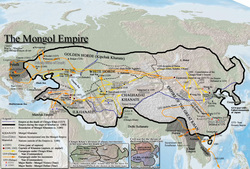
Chinggis Khan led his troops into Central Asia, Tibet, Northern China, and Persia. The Mongols also attacked and destroyed Beijing in 1215, continuing through Afghanistan and Persia.
The Mongols in Russia (The Golden Horde):
The Golden Horde conquered the region of modern-day Russia. The Mongol ruler Bantu conquered Russia, but he still kept the large number of the local rulers intact. The peasants were heavily taxed, but the money went to the Russian bureaucrats not the Mongols. They continued to support trade and because the Mongols were Muslims, conversation was still encouraged and the missionaries were allowed to visit.
**Hordes: small, independent empires
The Mongols in China (The Yuan Dynasty):
As Chinggis Khan began his conquests, China was among one if his first targets. The Mongols attacked the Chinese states in 1211 where they steadily conquered the territory even after the death of Chinggis Khan in 1227. The Mongols captured mostly all of western and northern China and also threatened what was left of the Song Empire, but the Song continued to resist for several decades.
In the 1260’s, Kublai Khan took charge of the Mongol empire and controlled China, including the Song Empire. The Mongol Empire adapted to Chinese ways by converting to Buddhism and made Mandarin Chinese the official language. Kublai Khan was considered the reunifier who brought China together as one state. He made Yuan China rich and powerful, with a successful military. He also rebuilt China’s bureaucracy and economy by repairing roads, canals, and built new cities like Shangdu and Xanadu. Kublai also repaired trade with the west, as well as the Silk Road, which again became a vital trade route.
The Mongols in the Middle East (The Ilkhanates):
In 1258, Hulegu, Kublai’s brother, defestd the Abbasid Caliphate. In the Middle East, the Mongols employed the local bureaucrats in the government and they converted to Islam by 1295. The original rulers were allowed to continue ruling, but they had to deliver the tax revenues and maintain order. They didn’t support agriculture, but they did however participate in trade.
Pax Mongolia:
The Mongol Peace took place when Mongolian power was at its peak and giant areas in Asia and Europe were under one rule. By eliminating tariffs, the Mongols united two continents for about a century. This allowed safe trade and contact between a variety of different cultures. During this period, the Silk Road reached its highest point. Paper money was used in many areas of the empire.
The Mongols in Russia (The Golden Horde):
The Golden Horde conquered the region of modern-day Russia. The Mongol ruler Bantu conquered Russia, but he still kept the large number of the local rulers intact. The peasants were heavily taxed, but the money went to the Russian bureaucrats not the Mongols. They continued to support trade and because the Mongols were Muslims, conversation was still encouraged and the missionaries were allowed to visit.
**Hordes: small, independent empires
The Mongols in China (The Yuan Dynasty):
As Chinggis Khan began his conquests, China was among one if his first targets. The Mongols attacked the Chinese states in 1211 where they steadily conquered the territory even after the death of Chinggis Khan in 1227. The Mongols captured mostly all of western and northern China and also threatened what was left of the Song Empire, but the Song continued to resist for several decades.
In the 1260’s, Kublai Khan took charge of the Mongol empire and controlled China, including the Song Empire. The Mongol Empire adapted to Chinese ways by converting to Buddhism and made Mandarin Chinese the official language. Kublai Khan was considered the reunifier who brought China together as one state. He made Yuan China rich and powerful, with a successful military. He also rebuilt China’s bureaucracy and economy by repairing roads, canals, and built new cities like Shangdu and Xanadu. Kublai also repaired trade with the west, as well as the Silk Road, which again became a vital trade route.
The Mongols in the Middle East (The Ilkhanates):
In 1258, Hulegu, Kublai’s brother, defestd the Abbasid Caliphate. In the Middle East, the Mongols employed the local bureaucrats in the government and they converted to Islam by 1295. The original rulers were allowed to continue ruling, but they had to deliver the tax revenues and maintain order. They didn’t support agriculture, but they did however participate in trade.
Pax Mongolia:
The Mongol Peace took place when Mongolian power was at its peak and giant areas in Asia and Europe were under one rule. By eliminating tariffs, the Mongols united two continents for about a century. This allowed safe trade and contact between a variety of different cultures. During this period, the Silk Road reached its highest point. Paper money was used in many areas of the empire.
Culture/Religion
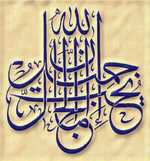
The Mongols were the last nomadic people to make an impact on the world. The conquered Russia and replaced previous capital, Kiev, with the new capital in Moscow. The Mongols left the greatest city of Russia, Kiev, in ruins. Cities such as Moscow who resisted the Mongols demand to surrender were destroyed and the people who lived there were killed or put into slavery. As Moscow’s power grew, the strength of the Golden Horde fell. Mongols blamed the Russian Priests for causing the snow to thaw, creating mud in the spring, which slowed down the horseman, risking defeat. However, the Mongol religion benefited Moscow’s Orthodox Church. The leaders of Moscow brought wealth to its city. In 1380 claims boosted when the Princes of Moscow shifted from being tribute collectors to being defenders of Russia.
Women Status
Mongol women became detached from the Mongol culture. They refused to adapt to the Chinese way of women. They kept their rights to their property and their control within the household they lived in. They were also free to wander the town, cities, and countryside.
Social Status
The Mongols, a group of nomadic people were usually herders of goat and sheep which transferred from each place they conquered. They used animals as food, such as meat, and dairy, such as milk. When they could, they would trade their milk and meat for grains and vegetables received from farmers. Their clothing was also made from animal skin and hyde.
Social Status
The Mongols, a group of nomadic people were usually herders of goat and sheep which transferred from each place they conquered. They used animals as food, such as meat, and dairy, such as milk. When they could, they would trade their milk and meat for grains and vegetables received from farmers. Their clothing was also made from animal skin and hyde.
China by Kaenan D. & Joy R.
Technology
-advanced from countries around them
-were evolved from little outside contact (isolated)
-invention of explosive powder
-first paper (when Islamic troops captured some papermakers in w. China)
-Chinese inventions moved westward more swiftly
- were focused on creating military machinery at the time
Political/Government
-mainly from the Confucianism bureaucracy
-numerous dynasties in control
-was in the era of Tang and Song Dynasties
-had scholars to improve confucian ideology
-Song dyn. never matched it's predecessor in political or military strength, leaving them their weakness
Economical
-created canal system to promote commercial expansion
-Tang dyn. made exchanges with China and Buddhist centers in the nomadic lands of central Asia
-horses, Persian rugs, and tapestries passed to China
-fine silk textiles, porcelain, and paper were exported to centers of Islamic civ.
-always used over-seas trade, rarely land trades
-during Han era, china mainly exported manufactured goods
-pottery was produced during Silla and Koryo eras.
-Koreans learned techniques of porcelain manufactured from the chinese.
Social Status
-gave ideas of their government, values, and culture towards Japan, Korea, and Vietnam.
-tried to expand themselves by creating alliances with countries around them
-were not forcing beliefs upon Japan, Korea, and Vietnam (let them decide on which ideas to take to later improve their civilizations)
-commoners could rise to upper level positions in bureaucracy
-family and society; women were still subordinate to men
-during empress Wu and Wei, women could go to highest levels of Chinese society
-lower classes that depended on women's labor were slow, due o the foot-binding of women.
-advanced from countries around them
-were evolved from little outside contact (isolated)
-invention of explosive powder
-first paper (when Islamic troops captured some papermakers in w. China)
-Chinese inventions moved westward more swiftly
- were focused on creating military machinery at the time
Political/Government
-mainly from the Confucianism bureaucracy
-numerous dynasties in control
-was in the era of Tang and Song Dynasties
-had scholars to improve confucian ideology
-Song dyn. never matched it's predecessor in political or military strength, leaving them their weakness
Economical
-created canal system to promote commercial expansion
-Tang dyn. made exchanges with China and Buddhist centers in the nomadic lands of central Asia
-horses, Persian rugs, and tapestries passed to China
-fine silk textiles, porcelain, and paper were exported to centers of Islamic civ.
-always used over-seas trade, rarely land trades
-during Han era, china mainly exported manufactured goods
-pottery was produced during Silla and Koryo eras.
-Koreans learned techniques of porcelain manufactured from the chinese.
Social Status
-gave ideas of their government, values, and culture towards Japan, Korea, and Vietnam.
-tried to expand themselves by creating alliances with countries around them
-were not forcing beliefs upon Japan, Korea, and Vietnam (let them decide on which ideas to take to later improve their civilizations)
-commoners could rise to upper level positions in bureaucracy
-family and society; women were still subordinate to men
-during empress Wu and Wei, women could go to highest levels of Chinese society
-lower classes that depended on women's labor were slow, due o the foot-binding of women.
Japan by Ira C. & Megan S.
Social/Cultural
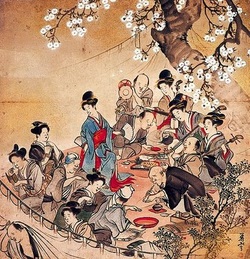
In Japan, there is a four-tier social system and that includes a Samurai Class, which feudal Japanese society was dominated by. These Samurais and their daimyo lords had enormous power. Members of lower classes would bow to show respect to them. The samurai would kill someone if they refused to bow. The samurai worked only for their lord, so they only listened to him. But the daimyo would only answer to the shogun. There were also farmers and peasants. They were just below the samurai, on the social ladder. Farmers were above the artisans and merchants, according to Confucian ideals, because they produced the food that everyone else needed. In the feudal era, even though farmers were an honored class, they lives under tax burden. Then, during the reign of the third Tokugawa shogun, Iemitsu, the farmers who grew rice, were not even allowed to eat it. They had to give it to people higher than them, like the daimyo. There were also artisans, who produced many goods, like clothes, cooking utensils, and more. But they were considered less important than farmers. The artisans lived in their own part of major cities. The merchants, who are on the bottom of the social classes, were traveling traders and shop-keepers. Merchants were said to have profited from the labor of more productive people. They lived in a separate section of each city, but higher classes were not allowed to have connections with them unless it was for business. The merchants, though, were able to get large amount of fortunes.
Woman Status
Women were constricted to domestic matters. The male of the household, were the ones who would represent the family and took care of public affairs. Women had different opportunities, but it depended what social class they were in. But women still had to do some kind of labor.
Woman Status
Women were constricted to domestic matters. The male of the household, were the ones who would represent the family and took care of public affairs. Women had different opportunities, but it depended what social class they were in. But women still had to do some kind of labor.
Japanese History
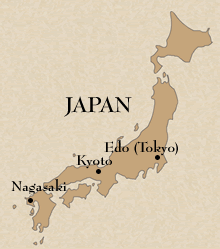
The migration of people from the Asian mainland is where Japan history begins. During this period, the sea that separates present day Japan from China and theKorean Peninsula was not fully formed yet. The rising sea lead to the first inhabitants of ancient Japan. The period of global warming a thriving forest and copious sea life. Japan flourished during the Jomon Period, which lasted from 10,000 BC to about 300 BC. At this time period, Japan was mostly a fishing and hunter and gatherer society. Around 300 BC, rice was introduced from the Korean Peninsula, during the Yayoi Period. This period also came with new technologies and skills which came from China. In 645, Kotoku became the emperor of Japan. Spread of rice farms led to a closer social structure, settlements, and also during the Kofun Period, which was 300 AD to 700 AD, political and social institutions came about. The history of Japan, during this period was also influenced by the upcoming of Buddhism in the sixth century.
Government/Political
Japan has the oldest surviving monarchy. The government is a Constitutional Parliamentary Monarchy. Around 400 AD, the Yamato clan eventually based in Kyoto, managed to gain control of other family groups in central and western Japan.
Economical
Weaving, rice farming, iron and bronze-,aking, and more new practices were introduced at the start of the Yayoi period, which was from 300BC to 250 AD. This period followed the Jomon period. Bronze and iron was more known in the Yayoi time period. Iron was used for agricultural tools, and ceremonial and ritual artifacts were made of bronze. It also had new pottery styles. In the Kofun Period, which began around 250, helmets and armor were made.
Government/Political
Japan has the oldest surviving monarchy. The government is a Constitutional Parliamentary Monarchy. Around 400 AD, the Yamato clan eventually based in Kyoto, managed to gain control of other family groups in central and western Japan.
Economical
Weaving, rice farming, iron and bronze-,aking, and more new practices were introduced at the start of the Yayoi period, which was from 300BC to 250 AD. This period followed the Jomon period. Bronze and iron was more known in the Yayoi time period. Iron was used for agricultural tools, and ceremonial and ritual artifacts were made of bronze. It also had new pottery styles. In the Kofun Period, which began around 250, helmets and armor were made.
Korea By Sheena F. and Mark U.
Social and Cultural Structures
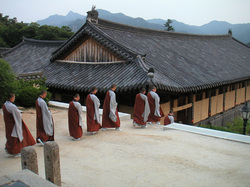
Since Korea was the most influenced country by China, it had adapted many Chinese characteristics. Buddhism supplied the key links between Korea and successors to Han dynasty in Northeastern China. They chose Buddhism over Confucianism. Koreans patronized Buddhist artist and some scholars even traveled China and few went to India for the Buddhist faith. Silla rebuilt its capital, Kumsong, to look similar as its Tang counterpart. For example, they built centered markets, parks, and lakes. The imperial family was separated from the districts of houses. Religious artmanesteries and pagodas were located in high places, just like Chinese to mollify local spirits and balance supernatural forces. The population of Korea were composed of extended family and hundreds of slaves and hangers-on. They had adapted the idea of art of printing which was established in China and porcelain. Aristocrats were the ones counted on in the society, and the people under their class were for their service. There were two types of them: commoners which are mainly peasants and near-slaves called "low born" ranged from miners and artisans to servants and entertainers.
Women Status
Similar to other societies during this time period, women were restricted. Men had power in the household and the next one would not be the wife, but the eldest son. Although, during the Silla dynasty, women status were relatively high but there were still restrictions based on a few activities that were considered inappropriate for women. During Koryo dynasty, women had high status until early Choson dynasties.
Women Status
Similar to other societies during this time period, women were restricted. Men had power in the household and the next one would not be the wife, but the eldest son. Although, during the Silla dynasty, women status were relatively high but there were still restrictions based on a few activities that were considered inappropriate for women. During Koryo dynasty, women had high status until early Choson dynasties.
Government Structures
Korea's first government structures were first influenced by the Tang Dynasty in China. Korea then started forming their own individual states, the Koguryo, Paekche, and Silla. They called themselves "The Three Kingdoms". By 600CE, the Silla Empire conquered the other two kingdoms, claiming the whole Korean peninsula. The idea of Confucianism was influenced from China to form the Silla Kingdom. It was it's first true government structure that Korea formed and adapted to. Influence from the Tang dynasty never left the Silla Kingdom. The king of still recognized the Tang emperor as his "overlord". Korea became more of a tributary state of the Tang Dynasty from then on.
Economic Innovations
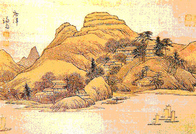
Since China's influence on early Korean economies, they were the main people who traded with Korean merchants. Because Korea derived from China, the trade of goods between Silla and the Tang dynasties were very common. The capital of the Silla Dynasty, Kumsong, became the main trade area in Korea. From then on, Korea didn't trade with many other civilizations than that of China. This was the start of their civilization until Korea was able to survive without China.
Technologic Advancements
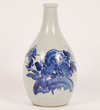
Continuing with the following trend, many of Korean values and technology were derived from the Tang Dynasty. Koreans rivaled the Chinese in artistic and technological advancements. China had great influence in the start of ceramic pottery in Korean empires. These pottery and ceramic makings are highly prized that of today. Also, Koreans were the first to use woodblocks in the process of printing. This was a true technological advancement during the post classical era.
